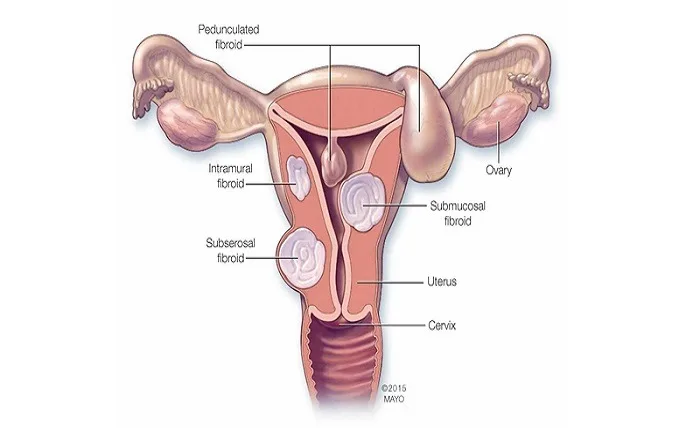What are the uterine fibroid treatments? Are you looking for fibroid treatment options– symptom relief WITHOUT surgery?
How to find the best fibroid treatment
Fibroids are non-cancerous (benign) lesions that develop in the uterus muscle wall and are the most common tumor of the female genital tract. 20 to 40% of women aged 35 years or older have uterine fibroids of significant size. For some years now, new techniques have appeared which allow the preservation of the uterus.
Women with symptomatic fibroids (pain, frequent urination, bleeding) can choose fibroid embolization as one of the firmest uterine fibroid treatments instead of surgical removal of uterine fibroids. During this operation, the woman receives a mild sedative to make her feel relaxed.
The UFE fibroid treatment takes about an hour and usually requires a one-day hospital stay. No surgical incision is made, but a small prick with a fine needle in the upper thigh to insert a thin tube (2 mm thick) into the artery of the leg. The Interventional Radiologist guides a probe into the arteries that supply the fibroids and closes them with individual tiny particles. This stops their blood supply; they die and shrink. This operation is as effective as the removal of fibroids.
After choosing embolization as one of the leading fibroid treatment options, pelvic pain is common and can be treated with anti-inflammatories and analgesics. The patient generally stays overnight in the hospital and may be given intravenous analgesia. Most women resume their activities after a week. Complication rates are lower than hysterectomy or fibromyectomy rates.
Uterine fibroid treatments: clinically proven method
Embolization of uterine fibroids was performed for the first time in 1994. Hundreds of thousands of women worldwide have been treated with this method. Clinical studies show that embolization fibroid treatment significantly improves the main symptoms (pelvic pain and discomfort, heavy bleeding, and urinary frequency), providing lasting relief and improving quality of life. 90% of women avoid hysterectomy, of which 85% have significant improvement in symptoms.
Indications
Embolization is a well-intentioned fibroid treatment option for women with symptomatic fibroids who need treatment but want to avoid surgery.
Women who are ideal for UFE fibroid treatment options are those who:
- They have symptomatic fibroids
- They want to keep their uterus
- They don’t want surgery
- They do not desire pregnancy in the future
- Embolization and fertility
Although recent reports show comparable fertility rates between embolization and fibroidectomy, it is currently recommended that women with symptomatic fibroids who desire pregnancy will not undergo embolization. Additional studies are ongoing.
Uterine fibroid treatments
Uterine fibroid treatments do not necessarily mean hysterectomy. Uterine fibroid embolization is a proven, non-surgical alternative to hysterectomy and fibroidectomy for treating fibroids.
The embolization provides symptom control comparable to surgery and has a significantly shorter recovery time – just one week.
Most women are unaware of the noninvasive uterine fibroid treatment options, such as embolization, and continue to accept hysterectomy as the only treatment. A hysterectomy is the surgical removal of the uterus and, often, the ovaries and can profoundly impact a woman’s life.
Comparison between fibroid removal and hysterectomy
The risk of short-term complications is similar for fibroid removal via an abdominal incision and for removal of the uterus via an abdominal incision. However, it is impossible to say with certainty what advantages and disadvantages the interventions have in the long term in comparison to one another since the question has yet to be investigated.
Myoma removal has the advantage that the uterus is preserved, and it is, therefore, still possible to become pregnant after the procedure. At the same time, this operation can alleviate the symptoms in many women, just like removing the entire uterus. However, after the fibroids have been removed, fibroids can grow back and cause symptoms. This cannot happen after a hysterectomy.
Fibroid surgery is usually not an emergency. It is generally possible to obtain detailed information about the fibroid treatment options before deciding. A decision-making aid that briefly summarizes and compares the treatment options most essential advantages and disadvantages can be used to support this. Anyone pressured by their doctor to undergo a specific uterine fibroid treatment should get a second opinion.
At USA Fibroids Center, we specialize in minimally invasive uterine fibroid treatments. Schedule an appointment online with our specialist to find the best fibroid treatment.



